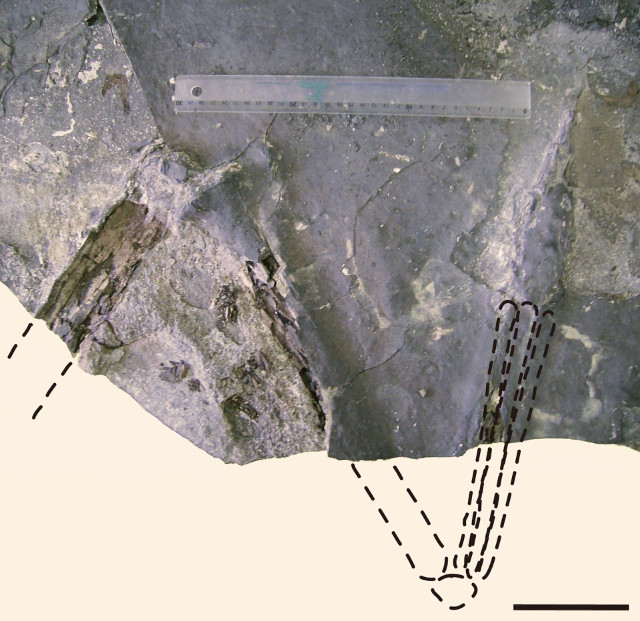 An article published in the “Scientific Reports” journal announces the discovery of a new species of carnivorous feathered dinosaur that lived in today’s Brazil about 104 million years ago, in the Cretaceous period. A team of paleontologists named it Aratasaurus museunacionali and attributed it to the group of coelurosaurs. The examination of the few available bones of the uncovered specimen indicates that it was a juvenile, but its length already exceeded three meters. An interesting conclusion is that the new species according to the researchers is a close relative of Zuolong salleei, a dinosaur that lived in today’s China about 160 million years ago, in the Jurassic period.
An article published in the “Scientific Reports” journal announces the discovery of a new species of carnivorous feathered dinosaur that lived in today’s Brazil about 104 million years ago, in the Cretaceous period. A team of paleontologists named it Aratasaurus museunacionali and attributed it to the group of coelurosaurs. The examination of the few available bones of the uncovered specimen indicates that it was a juvenile, but its length already exceeded three meters. An interesting conclusion is that the new species according to the researchers is a close relative of Zuolong salleei, a dinosaur that lived in today’s China about 160 million years ago, in the Jurassic period.
Coelurosaurs (Coelurosauria) were a group of theropod dinosaurs that have been the subject of many revisions over time with the re-evaluation of the inclusion of various subgroups including birds and relationships among the included species. Due to the discussions, different teams of researchers may provide different interpretations of such relationships even in studies conducted over the same period.
The bones of Aratasaurus museunacionali (top image courtesy Sayão et al, doi: 10.1038/s41598-020-67822-9) were discovered in the Romualdo Formation in Brazil, a site well known for the large number of well-preserved fossils. In this case, it’s only a partial leg, but its characteristics can still provide information on this species. However, the use of references to similar species determines a certain degree of approximation.
Similarities were found by the researchers with other coelurosaurs that, however, lived almost 50 million years earlier and are some of the oldest representatives of their group. In particular, the similarities were found with Zuolong salleei while other anatomical characteristics are similar to those of Aarun zhaoi, another species that lived in today’s China, and to those of Tanycolagreus topwilsoni, a species that lived in North America instead.
Aratasaurus museunacionali is the first species of coelurosaurs with such basal characteristics discovered in that geographical area. According to the researchers, this suggests a widespread distribution of this group during the Lower Cretaceous period.
The few bones available of Aratasaurus museunacionali limit the possibilities of comparisons with other species of coelurosaurs. However, every fossil is interesting, and in this group of dinosaurs’ case, having more complete fossils could help to understand, for example, how common plumage was.


